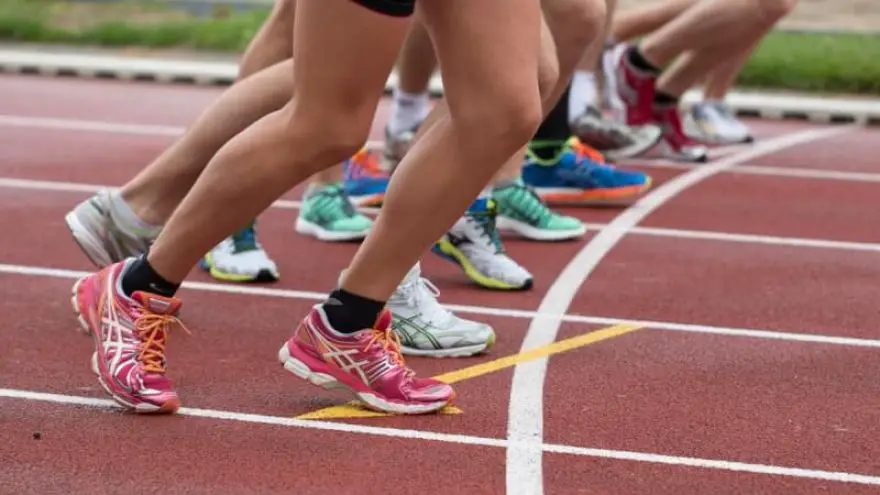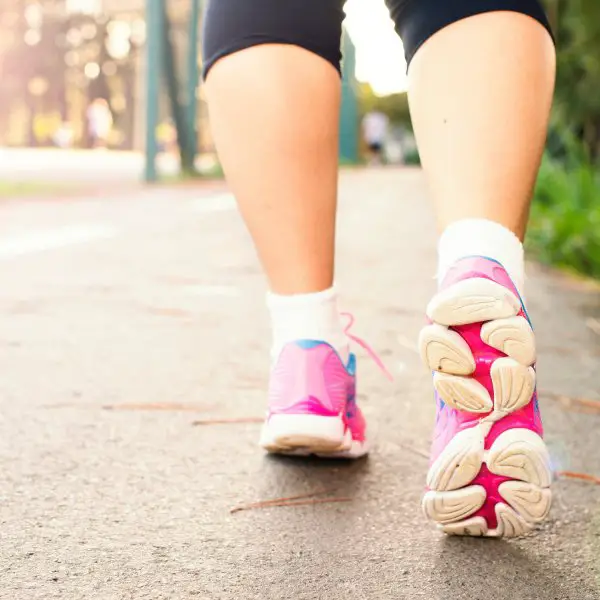How to Choose Running Shoes
 How to Choose Running Shoes
gearweare.net
How to Choose Running Shoes
gearweare.net
One common mistake that people often make when purchasing running shoes is to base the choice of shoe off style as opposed to function. It’s easy to see why beginners make this mistake though as there are many shoes on the market and the differences between them are not always easy to comprehend. To someone who doesn’t understand the function that each feature of a shoe has and the way each of these features will function with their foot, the only differentiating attribute may be the way they are styled.
Basing the selection of a running shoe off of style is likely to lead one to buy shoes that don’t fit right though. For this reason, we have broken down everything you need to know in order to purchase the perfect pair of shoes.
How You Use Your Shoes
The first step to purchasing running shoes is to think about the way you plan to use them. This includes how often you will run in them, how many miles you will typically run in them, and the type of terrain that you primarily plan to use them on. Depending on the thickness of the sole, running shoes for about 300-500 miles of use, so also make sure to mark the date that you purchase your shoes in your log so that you can keep track of how much wear they receive.
Shoes can be broken into three primary categories depending on the type of terrain they will be primarily used to run over. These categories are:
- Road-running Shoes – Made to be worn while running over the pavement, these shoes are lightweight and cushioned. The extra cushioning helps to absorb the impact of running over hard-packed, flat surfaces, which create a regular and recurring movement which can strain joints.
- Trail-running Shoes – These shoes are built tougher, with thick tread and added support, so that that can protect a runner over the variable terrain of trails.
- Cross-train Shoes – These shoes are made to be worn in the gym. They have thinner soles so that the athlete can have more contact with the ground. This makes them perfect for activities that incorporate balance.
As these different categories demonstrate, understanding how you will use your shoe may drastically change which shoe is most appropriate for you. When you go to a store it is likely that the attendant will ask you questions about your running habits. Thinking all of this through beforehand will, therefore, make the process much easier.

Understanding Wear Patterns
Just like the amount of running you do and where you run effects what shoes you should buy, the way you run needs to be accounted for in your shoes. The way one runs is also called gait. There are three primary gaits that a runner may have, and a different type of shoe is best for each of these.
- Neutral Pronation – This gait occurs when the outer heel strikes the ground first, followed by a slight inward rotation of the foot. This slight rotation is biometrically aligned, making this the best gait for minimizing knee and joint stress. Those who run like this should wear a shoe with neutral cushioning.
- Overpronation – Although some inward rotation is part of a normal gait when a runner’s foot rolls towards the inside of the foot too much it places them at risk of injury. This exaggerated inward roll is overpronation, which can be controlled with specialty shoes depending on how severe it is. These with bad overpronation should get motion control shoes, while those with a mild case should choose stability shoes.
- Supination – Supination occurs when a runner stays on the outer edge of their foot after their heel strikes the ground. This gait means that the runner’s foot is not absorbing enough shock, placing more stress on joints and knees. A neutral shoe with extra flexibility and cushioning should be used by those with this gait.
The shape of one’s arch is often equated with one’s gait. Those with a normal arch typically neutrally pronate, those with a low or no arch overpronate, and those with a high arch supinate. The height of your arch can be found by getting the base of your foot wet then stepping on a paper bag. Low archers leave a mark with a thick band between the toes and heel, while high arches will leave a thin line. Typical arches fall somewhere in between.
Basing gait analysis off of arch height is not exact though, so make sure to get a second opinion as well. Many running stores have treadmill/camera setups that allow them to film you while running, then play the video back in slow motion to determine the gait that you run with.
Other Components
There are quite a few other components of a running shoe that can be incorporated into the decision of which one to purchase. These include:
- Shoe Material – The material that a shoe is made from can make is tougher or lighter and more breathable. Some shoes sacrifice breathability for waterproofness, something that won’t seem like much of a loss to trail runners.
- Heel-to-Toe Drop – This is the difference in the lift that a shoe gives to the heel vs. the toe. The higher the heel-to-toe drop is the more the shoe encourages the heel to hit the ground first, as there is more padding for that part of the foot. The shorter the distance is the more a toe or mid-foot strike is encouraged.
- Stiffening Mechanisms – These are features added to a shoe to help support different parts of the foot. They include heel counters, which stiffen the heel, and medial posts or torsion bars, which make the sides of a shoe rigid.
- Upper, Midsoles, and Outsoles – These are the three aspects of a shoe. The upper is the material part that surrounds the foot, the midsole is the cushioning and stability below the foot, and the outsole is the base of the show where the tread is located. Each of these components can be tweaked to meet your needs.

Getting the Right Fit
Making sure a shoe fits properly is the final step. Running shoes should be snug but not tight. You want a shoe that firmly holds your foot in place but also has about a half inch of space between your toes and the end of the shoe.
Make sure to try shoes on and take them for a short run if possible. Pay attention to any discomfort or hotspots while running in them, as this will only get worse on longer runs. Also, bring the socks you wear will running along with any other add-ons such as insoles. Going to try on shoes at the end of the day is another good idea since everyone’s feet swell throughout the day. This will ensure that your shoes will fit when your feet are at their largest.
Finally, when you go to try on shoes go to a specialty running shoe store. A store like this will have more selection than a brand name store and will have more informed sales personnel than a chain.











